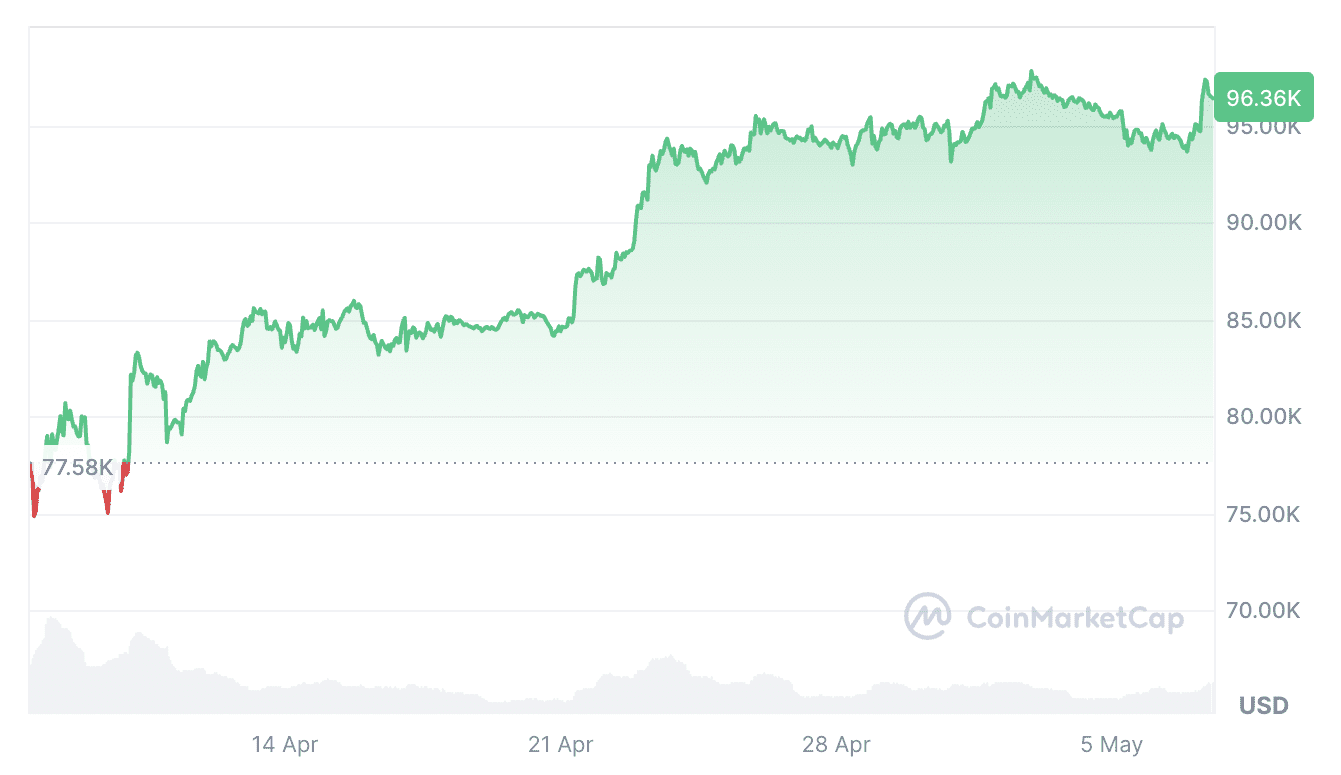Bitcoin’s price consolidation below $100,000 has sparked contrasting behaviors among investors. On one hand, large Bitcoin holders, often referred to as ‘whales,’ are accumulating significant amounts of BTC, demonstrating confidence in the cryptocurrency’s future. On the other hand, smaller retail investors are shedding their holdings, potentially signaling a lack of conviction or fear of further price declines.
Key Observations:
- Whale Accumulation: Wallets holding between 10 and 10,000 BTC have collectively acquired 81,338 BTC since March 26th.
- Retail Investor Selling: Wallets with less than 0.1 BTC have sold approximately 290 BTC during the same period.
- ETF Inflows: Spot Bitcoin ETFs have experienced substantial inflows, totaling $4.41 billion since March 26th, indicating strong institutional interest.
- Bitcoin Dominance: Bitcoin’s dominance in the crypto market reached 65% on May 6th, the highest since January 2021, signifying its continued relevance.
Contrasting Investor Behavior
Data from Santiment highlights a key divergence in investor behavior. Large Bitcoin holders increasing their positions while retail investors are reducing theirs can be interpreted as a bullish signal. This is based on the premise that informed, high-net-worth individuals are positioning themselves for a potential price surge, while less experienced investors are succumbing to market volatility.
Santiment noted in a May 6 X post that this pattern – large wallets accumulating as retail investors panic sell – often precedes a significant price breakout. This suggests that the current consolidation phase might be a prelude to another upward trend.
The accumulation by larger wallets represents a 0.61% increase in their total holdings. This suggests a possible retest of the $100,000 psychological threshold. However, Bitcoin must overcome the $95,000 level to retest its all-time high.
Bitcoin ETF Impact
The substantial inflows into spot Bitcoin ETFs are another important factor. These ETFs provide traditional investors with a regulated and accessible way to gain exposure to Bitcoin. The continued flow of funds into these ETFs suggests a growing acceptance of Bitcoin as an asset class among institutional and retail investors.

Bitcoin Dominance and Altcoin Season
Bitcoin’s dominance in the overall cryptocurrency market has been increasing, reaching levels not seen since early 2021. This indicates that investors are currently favoring Bitcoin over alternative cryptocurrencies (altcoins). CoinMarketCap’s Altcoin Season Index currently indicates “Bitcoin Season”, reflecting this trend.
Potential Implications and Outlook
The combination of whale accumulation, strong ETF inflows, and Bitcoin’s increasing dominance suggests a potentially bullish outlook for the cryptocurrency. However, it’s crucial to consider other factors, such as regulatory developments, macroeconomic conditions, and overall market sentiment.
While some analysts predict new all-time highs by the end of June, others caution that Bitcoin must hold above the $95,000 level to avoid a deeper correction. The cryptocurrency market is known for its volatility, and investors should exercise caution and conduct their own research before making any investment decisions.
Factors Influencing Bitcoin’s Price
- Macroeconomic Trends: Global economic conditions, inflation rates, and interest rate policies of central banks can influence Bitcoin’s price.
- Regulatory Environment: Regulations regarding cryptocurrencies in major economies like the United States, Europe, and Asia can significantly impact market sentiment and investment flows.
- Technological Developments: Advancements in Bitcoin’s underlying technology, such as the Lightning Network, could improve its scalability and usability, driving adoption and price appreciation.
- Market Sentiment: Overall investor sentiment, influenced by news headlines, social media trends, and analyst opinions, plays a crucial role in short-term price fluctuations.
Ultimately, whether Bitcoin reclaims its all-time highs or faces further corrections will depend on a complex interplay of these factors. Investors should stay informed, manage their risk, and make decisions based on their own research and financial goals.